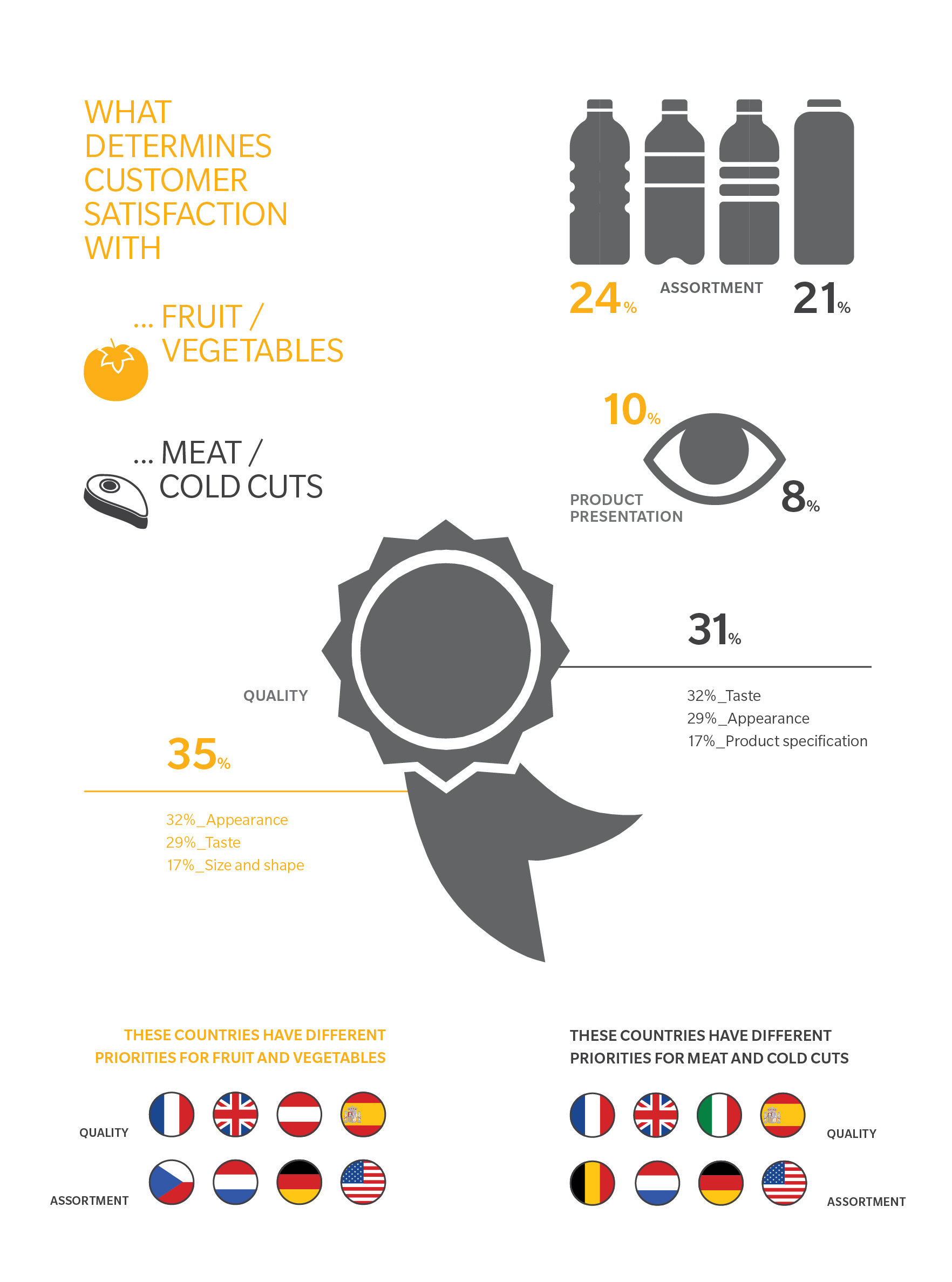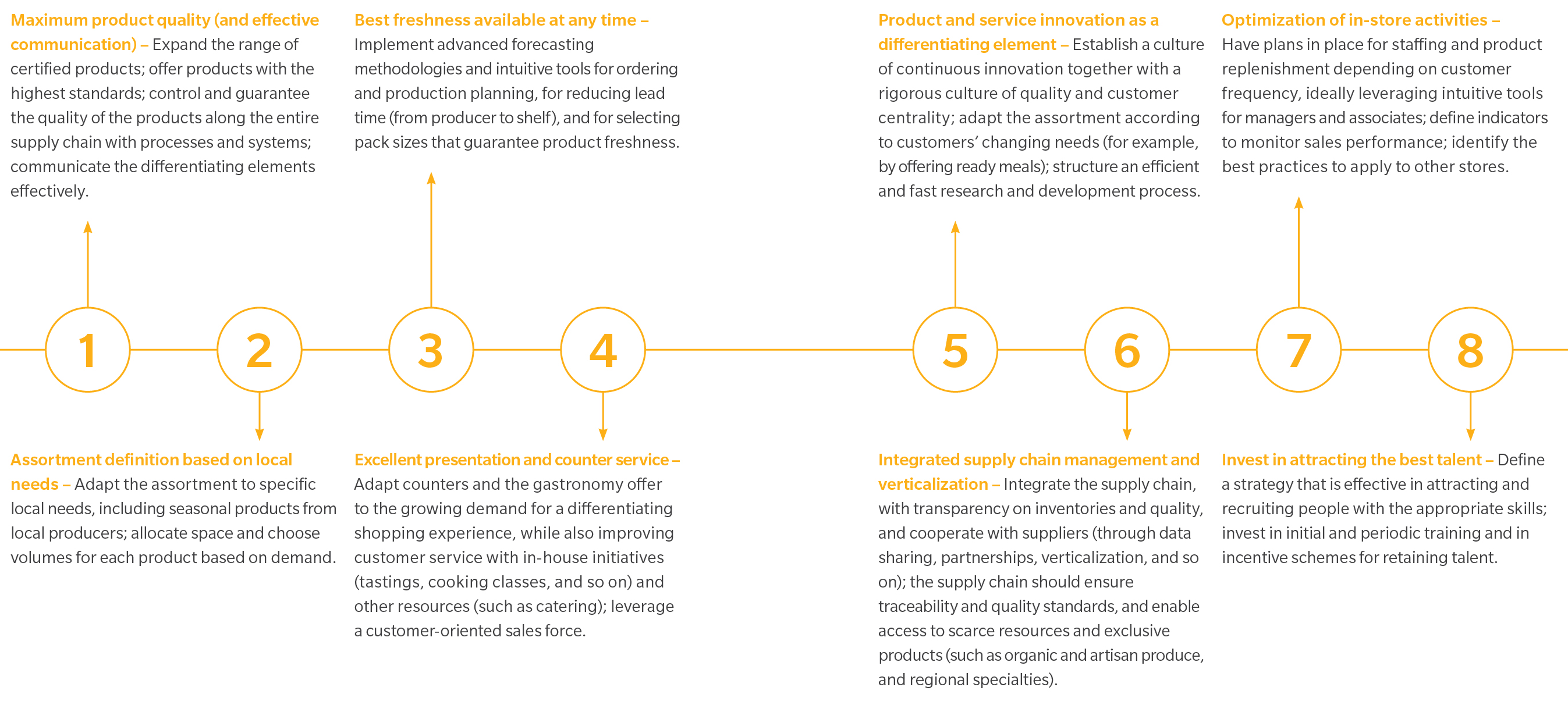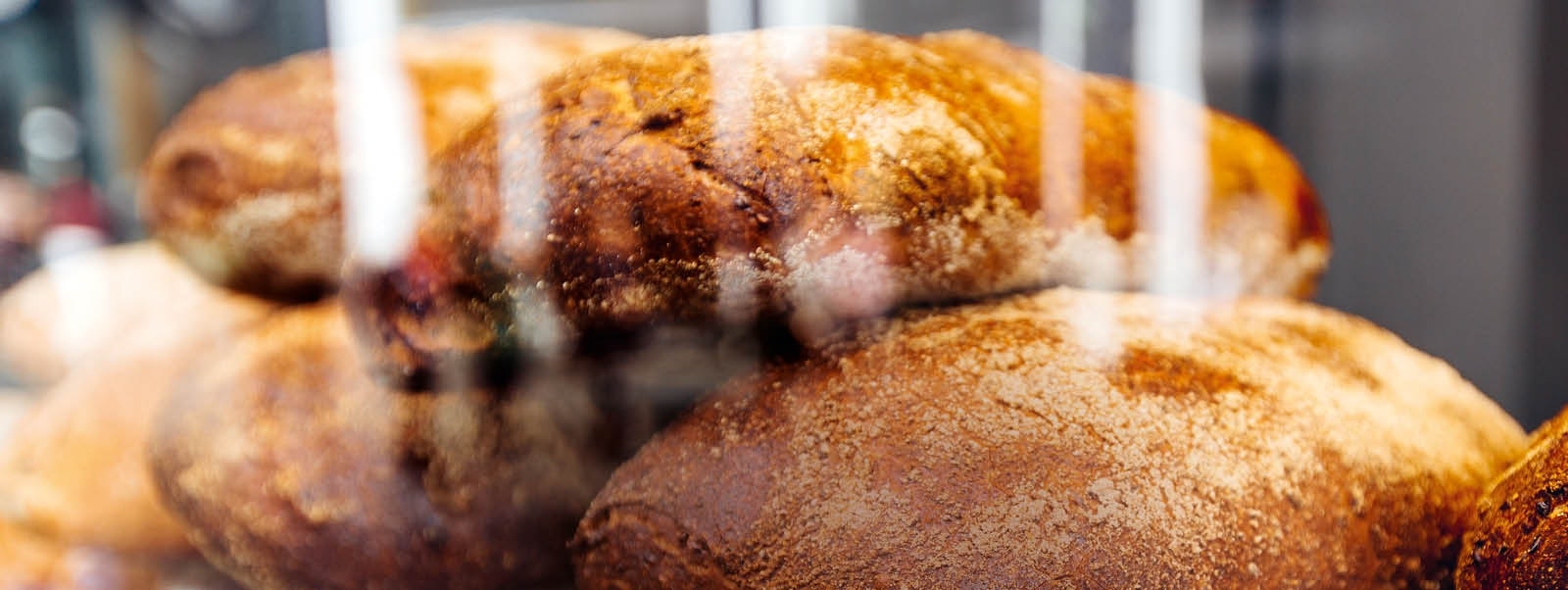For this reason, taking the fresh food departments – from bread to meat to fruit – to a higher level is essential. Quality is no longer enough to enable retailers to stand out. To face this challenge, they need a more personal and emotional approach as well as new tools.
Exercising greater control over the supply chain is imperative. To become Fresh Champions, retailers need to excel in every element of the fresh value chain, guaranteeing high standards “from farm to fork.”
FRESH IS KEY …
… for traditional retailers to attract high-value customers, differentiate themselves from other players, and win against online competitors.
Fresh Products Guide The Choice of The Main Store – For 59 percent of the consumers interviewed, the quality of fresh products (which include meat and cold cuts, fish, fruit and vegetables, bakery, cheese, and ready meals) is the most important criterion for selecting their main grocery store. As many as 70 percent of consumers continue to return regularly to the store they consider best for this category of products. At the same time, stores that fail to offer high-quality products risk losing their customers: 53 percent of all shoppers are willing to change stores if they are not satisfied with the offer of fresh products.
Better Fresh Leads to More Traffic and Larger Baskets – Satisfied shoppers of fresh products visit the store 7 percent more than dissatisfied customers and spend 24 percent more. Furthermore, excellence in fresh products also supports sales in other categories: On average, an increase of 1 euro in fresh spending can lead to an increase of 1.47 euros in total sales.
Fresh Is A Crucial Element of Differentiation – 32 percent of respondents perceive a significant difference in the quality of fresh products among the various chains. For non-fresh products, this percentage drops significantly to 20 percent. This depends on the market: While only 19 percent of Dutch customers and 22 percent of UK customers perceive differences in the quality of fresh products among retailers, the number more than doubles for Russia (54 percent).
Customer Survey Results

Importance Of Product Categories For Fresh Satisfaction

* Correlation, category satisfaction vs. fresh satisfaction
Quality Is Not The Only Element That Matters – The fact that customers may struggle to perceive differences in fresh food quality among retailers does not mean that quality no longer matters. On the contrary, it is still by far the most important factor defining customer satisfaction (see graphic); it has simply become the norm, especially when it comes to the visual appearance of products. A common misconception is that quality is defined by looks for fruit and vegetables and by expiry date for meat. While this is not completely wrong, our survey highlights the importance of taste: It is already the main factor determining quality for meat and bread and is becoming more and more significant for fruit and vegetables (as the graphic shows). Retailers should ask themselves what they are doing for customers to experience superior taste both in the store and at home.

Retailers Can Impress With An Assortment Tailored to Their Customers – Globally we see assortment becoming an increasingly important driver of customer satisfaction. Customers focus on different elements depending on geography. For example, consumers in German-speaking countries care more about local than seasonal assortment, and vice versa in English-speaking countries. The importance of categories also varies between countries. Additionally, preferences depend on the demographic in each store’s immediate vicinity. Retailers will have to make sure they understand what customers want in each of their stores and adapt the assortment to their individual needs, while trying to ensure as much exclusivity as possible.
Customers Seek an Emotional Connection – We can observe a much stronger correlation between satisfaction and product presentation in North America (over 20 percent) than in Europe (around 10 percent), especially in the fruit and vegetable category. Leading US retailers are aware of this and use theatrical presentations to connect emotionally with their consumers. We expect this to become an area of focus for European retailers (with a more cost efficient approach) too, in the future.
But the most important element in connecting with shoppers is human interaction. Under tight cost pressure, retailers struggle to give their employees enough time to interact with customers. In particular, service counters can make a huge difference. They create the atmosphere of a specialty store and make shopping a pleasant experience.
Leverage Technologies – New technologies provide retailers with many opportunities to strengthen their offer to customers while keeping complexity and cost under control. For example, a state-of-the-art ordering system that uses machine-learning technology and provides intuitive tools will secure better availability and reduce waste, while allowing employees to spend more time with shoppers. Another example is a modern assortment tool that creates individual planograms for stores, containing all the favorite products of each store’s local customers while limiting the assortment to a minimum that avoids waste and ensures freshness.
Key Success Factors For A Farm-To-Fork Transformation

In summary, our experience suggests that a significant step forward in the fresh food category cannot be achieved simply by partially optimizing some key functions (such as purchasing or the supply chain). It requires a holistic approach – from farm to fork – in which the entire system focuses on ensuring maximum customer satisfaction and on driving gains in the short and long term. Starting this transformation requires resources and perseverance but it pays off: Fresh Champions achieve more traffic and larger baskets, and stand out in the market as top players. They manage to retain customers and create a positive halo effect, strengthening their brand. This is how Fresh Champions can protect and increase their market share.

